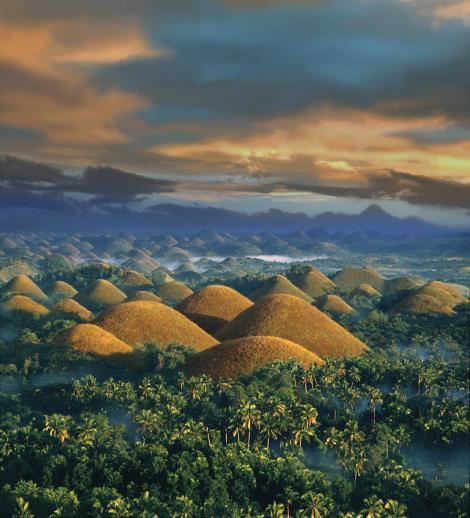
A new National Geographic book has named the Bohol Chocolate Hills in Central Visayas as among the world’s most wild and beautiful places.
Nat Geo’s feature on “17 of the World’s Most Wild and Beautiful Places” placed Bohol in the 15th spot of “picture-perfect journeys” from the new National Geographic book Wild Beautiful Places.
Nat Geo describes the conical Chocolate Hills of Bohol Island in the Philippines – recently featured in the art work of the Hollywood movie Sherlock Gnomes – as “a mystery of nature.”
Numbering about 1,776 hills spread over an approximately 50 square kilometer area, the Chocolate hills are uniform in shape, some standing from 30 to 50 meters high. The famous landmarks are known to change color from green to brown according to the season.
“And though lush foliage paints the mounds a vibrant green much of the year, in the driest months the rain-starved landscape resembles row after row of giant chocolate drops,” goes the Nat Geo description of the Philippines’ hills.
A Nat Geo video and article, “Soar Over the Chocolate Hills in the Philippines” presents the hills in even more poetic light:
Nat Geo’s Abby Sewell writes: “The Chocolate Hills have given rise to several origin legends. According to one story, a giant who had been disappointed in love wept, and the hills grew where his tears fell. In another version, a pair of giants went to war and lobbed boulders at each other for days. The giants eventually resolved their differences, but the mounds remained where the rocks landed.”
Geologists believe the geological formations were formed from marine limestone on top of a clay layer as they were lifted from the sea. Nat Geo refers to the Philippine hills as grass-covered, coral limestone karst domes.
The Chocolate Hills of Bohol have been declared as a National Geological Monument and have been nominated to the UNESCO World Heritage Sites.










